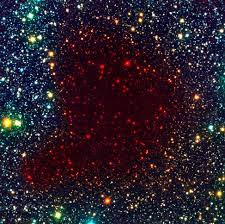"What Is Galaxy Gas? Understanding the Building Blocks of the Universe
Galaxies are huge systems made up of stars, gas, dust and dark matter, all held together by gravity. They vary greatly in size and shape, but generally fall into three categories: spiral, elliptical and irregular galaxies. While stars are the most visible components of galaxies, a significant portion of their mass is made up of galaxy gas, dust and dark matter, which are often invisible to the naked eye. Here is a description of these components:
Stars: Stars are the most recognizable elements in a galaxy. These glowing balls of gas (mainly hydrogen and helium) produce light and energy through nuclear fusion. Galaxies can contain anywhere from millions to trillions of stars, depending on their size.
Galaxy gas: This is a key element that fuels the formation of new stars. The gas in galaxies is mostly hydrogen, with some helium and smaller amounts of heavier elements. It exists in different states – atomic, molecular and ionized – and can be found throughout the galaxy. Galactic gas plays a fundamental role in the life cycle of a galaxy by promoting star formation, contributing to the interstellar medium (ISM), and interacting with other elements in the galaxy.
Dust: Interstellar dust consists of tiny solid particles that, like gas, are dispersed throughout galaxies. Dust is important because it plays a role in absorbing and scattering light, affecting how we observe galaxies from Earth.
Dark matter: Despite being invisible and mysterious, dark matter makes up most of a galaxy’s mass. It does not interact with light, but it does exert a gravitational force, helping to hold galaxies together.
Black holes: Many galaxies, including our own, have a supermassive black hole at their center, which plays a key role in regulating galaxy dynamics.
Galaxy Gas' Role in the Big Picture of the Universe
Although galaxy gas is often overlooked in favor of stars and other visible components, it plays a vital role in the formation, evolution, and nurturing of galaxies and the entire universe. Here's why:
Star Formation:
Galaxy gas, especially hydrogen, is the raw material for star formation. As gas clouds cool and collapse under their own gravity, they form new stars. This process occurs in regions called stellar nurseries or nebulae. Without gas, no new stars can form, which means galaxies will eventually "die" as existing stars burn out over billions of years.
In spiral galaxies like the Milky Way, gas is concentrated in the arms where active star formation is constantly taking place, keeping the galaxy "alive" with new stars.
Galactic Evolution:
The amount of gas within a galaxy determines its potential for evolution. Younger galaxies often contain large amounts of gas, which fuels star formation and helps the galaxy expand. As galaxies get older, they can lose their gas through star formation, supernova explosions, or interactions with other galaxies.
The presence of galaxy gas is important for galaxies to maintain their dynamic nature. As gas is used up or expelled, galaxies can change shape, merge with other galaxies, or evolve into different types, such as transforming from a spiral galaxy into an elliptical galaxy after gas depletion.
Interactions between galaxies:
Galaxy gas plays an important role in galaxy mergers and collisions. When galaxies interact, their gas clouds collide and are compressed, often leading to bursts of intense star formation known as starbursts.
In galaxy clusters, individual galaxies are surrounded by hot gas. Interactions between galaxies and this inter-galactic medium can remove gas from galaxies, affecting their future evolution.
Feeding black holes:
Galaxy gas doesn't just fuel star formation; it can also feed supermassive black holes at the centers of galaxies. When gas falls toward the black hole, it forms an accretion disk, and this fall can cause the black hole to grow larger. In some cases, this process powers quasars — extremely bright objects that even outshine entire galaxies.
Cosmic recycling:
Galaxy gas is part of a cosmic recycling system. When stars die in supernova explosions, they send gas back into space, enriching the galaxy with heavier elements. This gas can then cool and condense into new stars, continuing the galaxy's life cycle.
This constant cycling of gas between stars and the interstellar medium ensures that galaxies remain active and evolving.
The big picture in the universe:
Galaxy gas is essential for understanding the large-scale structure and evolution of the universe. As the basic building block for stars and planets, gas enables the growth and transformation of galaxies over cosmic time.
In the early universe, clouds of gas condensed to form the first stars and galaxies. As galaxies evolved, the gas played a key role in shaping the structure of the universe, filling the vast spaces between galaxies and forming the cosmic web that connects them.
Without galaxy gas, there would be no stars, no planets, and no galaxies. It is literally the "life blood" of the universe, driving the ongoing cycle of birth, death, and rebirth that has shaped the universe for billions of years.







Comments
Post a Comment